Inside The Identity: The Docusign Rebrand
Earlier this week, I was preparing for yet another crazy week with projects, event opportunities, and other tasks. Part of my daily routine is to look at design and tech articles on LinkedIn to start drumming up some inspiration for the day. It came through easily when I got a glimpse of the new Docusign rebrand—done in-house by the Docusign Brand + Creative Team—and I believe this might easily be one of the best rebrands of 2024.
Docusign, formerly named as DocuSign, has long been known in the tech and B2B industries as the e-signature pioneer. With Docusign, it couldn’t be easier to create an online agreement form, share it, and monitor signatures. Having rebranded back in 2021 with Stephen Kelleher Studio, their brand tone and messaging was centered around the simplicity of their eSignature experience, further reinforced with a modular and light-hearted graphic style. However, in order to move the company and industry forward, they needed a direction that represented their vision, not just their legacy.
The 2021 rebrand featured a modular grid based on the rectangular form and proportions of a document. The grid created the foundation of all brand visuals, from illustrations to advertising.
Credit: The-BrandIdentity.com
The new rebrand sees the company change from “DocuSign” to “Docusign,” with bold, high-contrast colors, sweeping motion, and additional nuances to signify their vision for the future.
Credit: Docusign Brand | Introduction
Now, with the launch of their new product, Docusign IAM (Intelligent Agreement Management), they ended up creating their own category within the SaaS (Software as a Service) industry. As a result, all aspects of their brand tone and style took a dramatic shift from solely being centered around eSignatures, to now holistically representing the seamless experience of “agreements.” From where it was only a few years ago to now, the difference couldn’t be anymore clear.
For me personally, not only is this one of the best rebrands of 2024, but it’s also a textbook example of why and how a brand built from the inside-out creates a more memorable brand experience. Here’s why:
A Strategy Made to Unify
Looking past the sleek visuals and bold colors, the Docusign rebrand is strong by the sheer impact of their strategy and positioning. It’s not hard to get enraptured by the optimism and vision-driven messaging. The tagline, “Bringing Agreements To Life,” is their brand promise at first glance. The tone of their language is rooted in their brand attributes: Smart, Dependable, Reliable, and Transformative. In their brand reveal video, they refer to their new era as being “Inspired by the [people] we serve,” while also declaring their mission to solve “one of the world’s biggest problems: how people reach agreement, and use it to create positive change.”
Now, most people wouldn’t expect to hear this sort of compelling language when it comes to something as cold and corporate as eSignatures for contracts which, if you think about it, is actually quite brilliant. On a simplistic level, the word choice of “agreement” versus “contracts” or “eSignatures” automatically makes the tone warmer. It switches the conversation from something that “binds” to an idea that unifies and brings people together. This simple yet aspirational concept is not only clearly understood through the boldness of their copywriting, but through every aspect of their visual language.
Docusign’s new visual identity system is chock-full of illustrations and graphic assets that speak to the fundamental issues that conventional static documents present. Labeling these issues as “The Agreement Trap,” they cost businesses data, time, money and opportunities every year.
Credit: Docusign Brand | Introduction
“Agreements” as Visual Harmony
Looking at the new branding, it’s clear that it goes beyond what folks think about when they simply think of contracts. Utilizing a system of bold color overlaps, it reinforces the idea of two entities coming together in harmony. From the logomark itself—called the “Nexus”—to other graphic elements, it creates an exciting and compelling experience that seeks to unify collaborators. With the Nexus logomark in particular, the two graphic shapes (“D” for Docusign and the original “document” mark) converge to create an inkwell, which they refer to as “The Shape of Agreements.”
The Docusign logo evolved from a “Camel-Case” treatment to all lowercase, with subtle treatments made to their custom typeface, Docusign Indigo. The “Nexus” logomark features a converging of “D” and “Document” to create their “Shape of Agreements.”
Credit: Docusign Brand | Introduction
The color palette evolved from a corporate spectrum of blues to radiantly complimentary colors which, used within gradients, provide an emboldened and refreshing face to what can be considered “corporate” and “clean” design.
Credit: Docusign Brand | Introduction
The art direction of the brand drives home elements of scale, layering, and positive transformation to reflect back on the theme of “agreements.” Shapes built on isometric grids create compositions that are inspired by busines growth and scalability.
Credit: Docusign Brand | Introduction
An End-To-End Brand Experience
It’s becoming less uncommon for well-known brands to have identities beyond visual and verbal. With Docusign’s rebrand, they feature both sound and motion identities that are not only complimentary to everything else, but are also deeply rooted in the brand’s mission and values. The motion identity features the brand shapes and colors fluidly merging and blending together to create new forms and colors, making “big moments from small steps.” On-scroll interactions and behaviors bring static graphics to life in dynamic compositions that reflect the mission and values. Meanwhile, the sound identity puts their stamp on “the audio of agreement” through a mix of friendly, upbeat melodies for product interactions. By incorporating sound into their identity system, they add another dimension from which consumers can interact with and remember them.
When these identity systems are merged with the visual and verbal identities, the result is an all-encompassing, inherently dynamic, and impactful brand presence that’s not only awesome to behold, but clearly communicates its intent and promise to their consumers. You can experience this via their brand reveal landing page here.
The landing page for Docusign’s brand reveal is a testament to how powerfully captivating a brand presence can be, when visual, verbal, sound, and motion identities combine and work together in harmony. Scrolling between each section is nothing short of delightful and visually stimulating.
Credit: Docusign Brand | Introduction
With Change Comes Opportunities
Docusign’s highly successful rebrand is a reminder of two major truths within branding and marketing practices.
The first is that rebranding should be considered when big changes—such as new products, target markets, or leadership—affect the company. With Docusign’s new IAM product, the opportunity to push the brand forward was clear.
The second is that all brand identities will be more likely to succeed when they start from the “core” brand strategy. Whether it’s a large tech company like Docusign, or an early-stage start-up or small business, starting with a clear brand strategy will allow for a more cohesive and memorable presence towards prospects, customers, competitors, and investors alike.
Congratulations to the Docusign Creative + Branding team for an outstanding achievement, and I’m looking forward to seeing what’s next.








